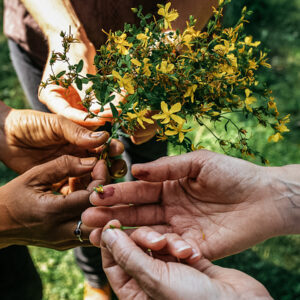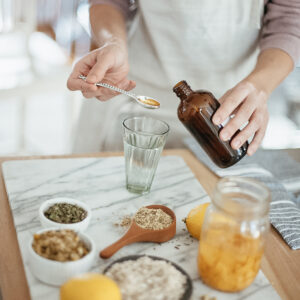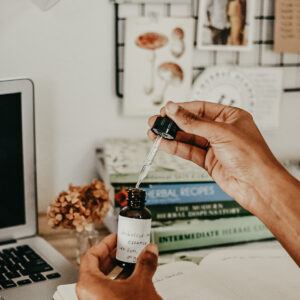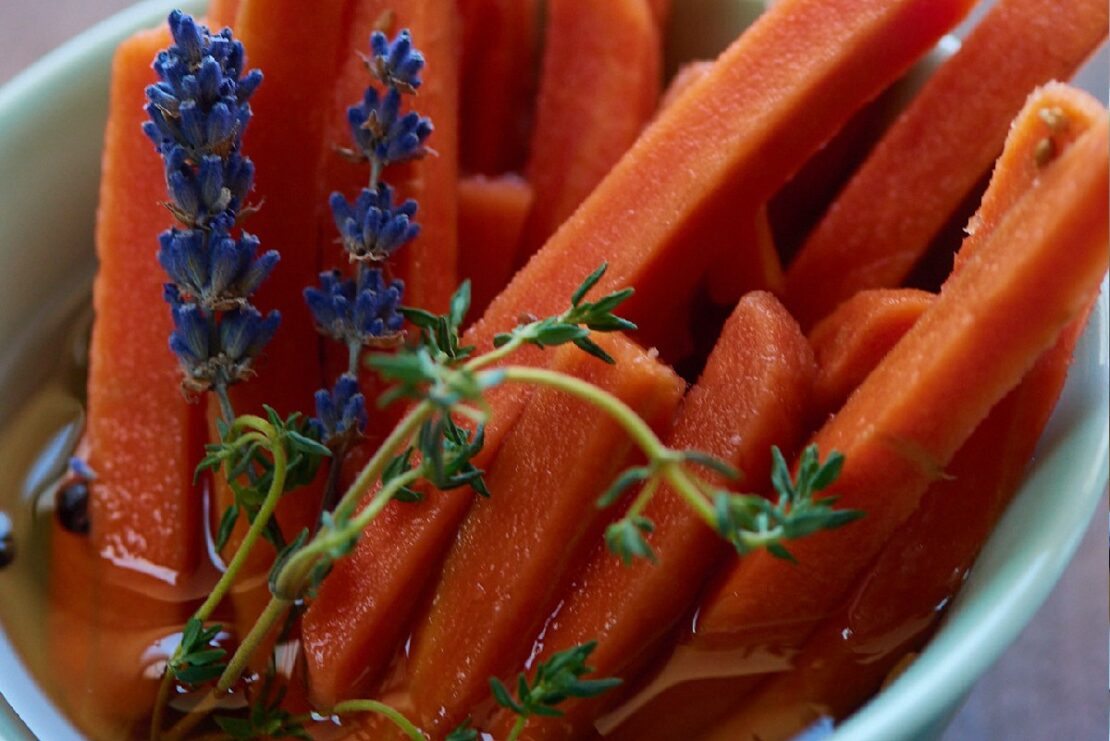
How to Make Pickled Carrots with Lavender
The book excerpt below is taken from Preserving the Seasons by Holly Capelle. Preserving the Seasons is a straightforward and beautifully photographed guide to boiling water canning; drying, dehydrating, freeze-drying; freezing, infusing, and quick pickling. These are the easiest and most effective methods for preserving produce, herbs, and edible flowers. The recipe below for Pickled Carrots with Lavender is one good example.
Organized by method and with beautiful photography, each section covers detailed information for best practices, along with troubleshooting and storage tips. Here, too, are recipes for delicious dishes so you can serve what you’ve preserved: Oil and vinegar infused with herbs, peppers, and alliums, that are perfect for pasta sauces and salads; herb blends such as Greek Seasoning Blend, that bring flavor and ease to any dish; freezer and shelf-stable jam, such as Any Stone Fruit Preserves, perfect on toast, in homemade ice cream and other treats; Rosemary Citrus Bundt Cake made with dehydrated oranges; quick Pickled Pepper Slices, an instant condiment for burgers and tacos; Peach Slab Pie, that brings summer anytime with frozen peaches, just to name a few.
Preserving the Seasons by Holly Capelle © 2025. Printed with permission from the publisher Simon Element.
Quick, Pickle It!
Vinegar is the main ingredient in pickle brine. Vinegar works as a natural preservative by inhibiting the growth of certain types of bacteria. It brings out the flavor of vegetables and fruit (yes, fruit). But vinegar alone is too acidic for a pickling liquid. Here’s what you need to get you on your way.
Vinegar: Choose a good-quality vinegar with 5% or higher acidity (which you’ll find on the label), avoiding those that contain additives such as sugar or artificial sweeteners. Most canning recipes call for apple cider vinegar or distilled white vinegar, both of which complement fruits and vegetables.
Water: Believe it or not, the type of water you use matters. Hard water contains minerals that can adversely affect the quality of the pickles. For best results, use soft tap water or filtered water for making brines.
Salt: Salt not only preserves but adds flavor and crispiness to whatever you are pickling. Use pickling or canning salt, which dissolves readily and is free of additives. Iodized salt makes a brine cloudy and causes pickles to discolor and go limp.
Sugar: Unless the recipe specifies otherwise, use granulated cane or beet sugar. Infused sugars can offer additional flavor to your recipes.
Additional flavor: Fresh herbs or spices add extra flavor to your pickling recipes. These flavor boosts are sometimes added to the brine in a spice bag or included in the jar with the food.
Pickle firming agent: Calcium chloride is widely used in the pickling industry for a crunchy pickle. These optional, generic granules are also sold under various names and can be found in the canning section at the store. Follow the manufacturer’s instructions for use and measurements.
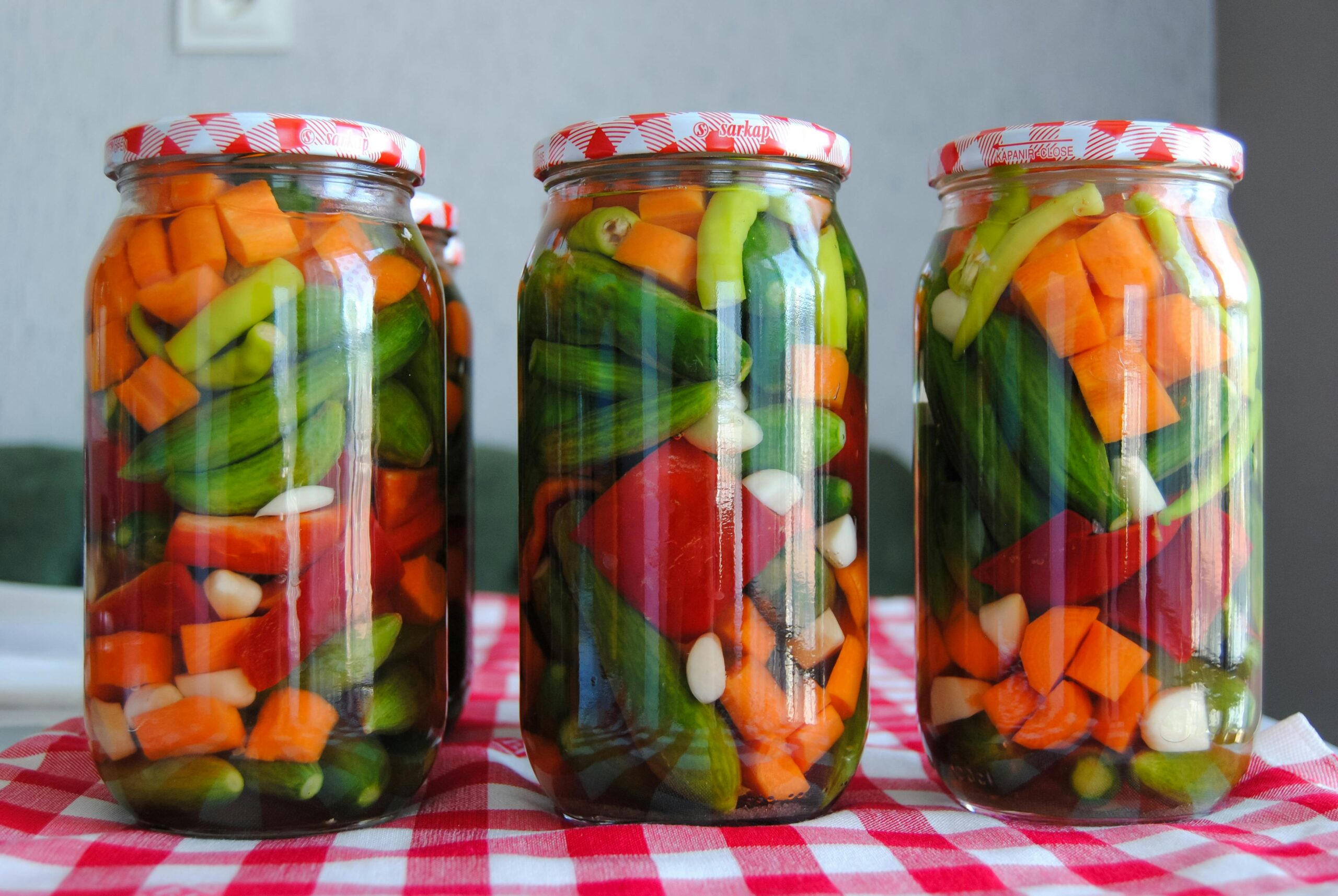
Packing and Storage
There are two ways to pack jars for pickling, whether you’re canning or not.
Fresh Pack Method Raw, uncooked produce is packed directly into a clean, heatproof jar and then covered with a hot or cooled vinegar solution. Foods packed this way will retain texture and crunch longer than the hot pack method, although the flavors may take longer to develop.
Hot Pack Method This method offers the quickest results. Produce is simmered in the pickling brine, packed, and covered with hot brine.
Regardless of method, leave 1/2-inch headspace. Remove the air bubbles with a nonmetallic spatula or chopstick or a canning accessory known as an air bubble remover (see page 64). Then wipe the rims with a damp cloth, secure the lids, label, and date.
Quick pickles can be stored in new or repurposed glass jars. Just make sure the lids are nonreactive. Bail jars— glass jars with clamp lids—also work well. Before packing, wash the jars in hot, soapy water and rinse well.
IMPORTANT NOTE
To avoid a metallic taste in your pickled foods, use a nonreactive pot and utensils, as metal can react with vinegar and leave an off flavor. Stainless steel, glass, nonstick, and enamel-covered cookware are all nonreactive. Avoid aluminum, cast iron, or copper cookware.
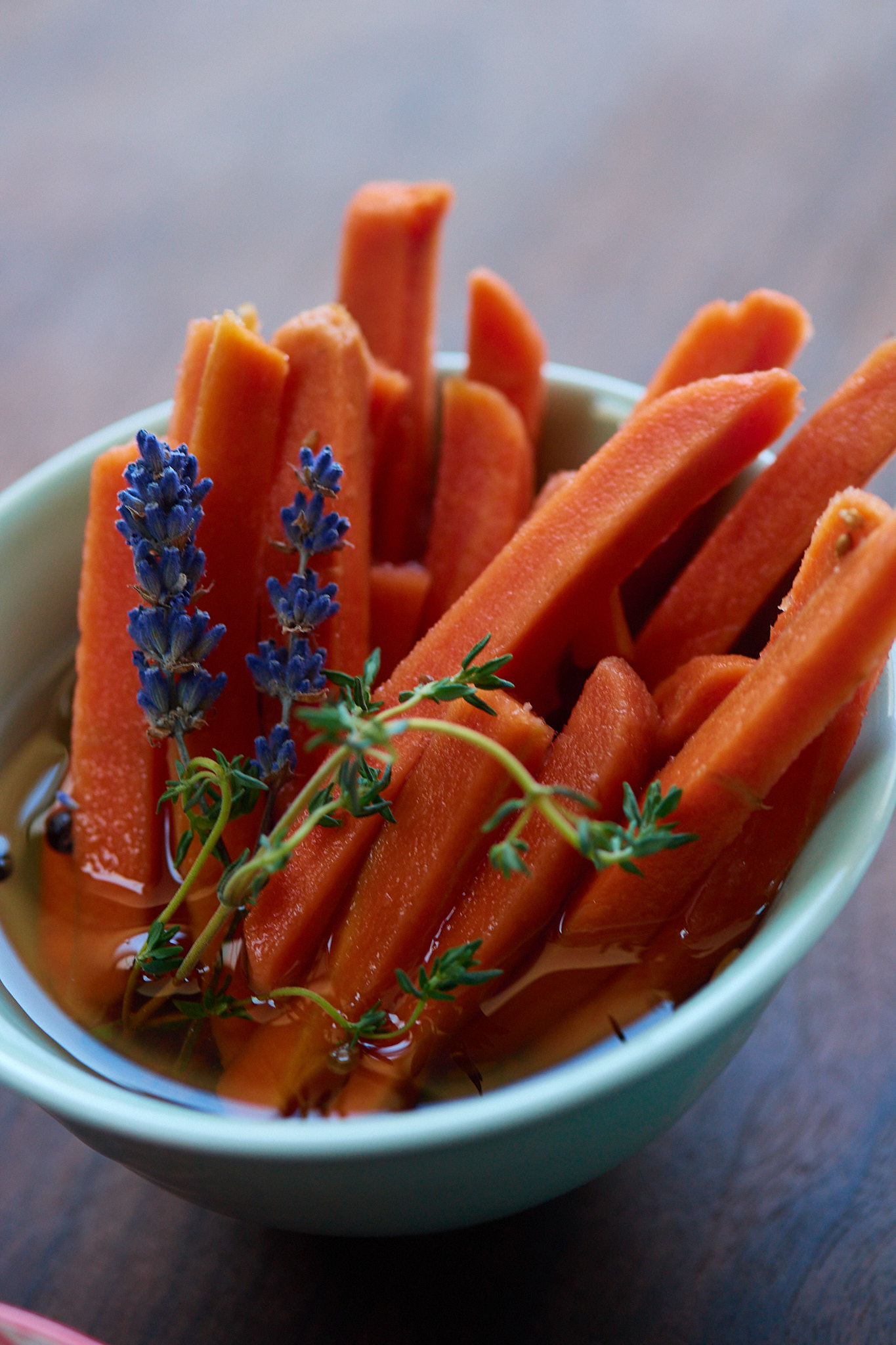
Quick Pickled Lavender Carrots
The combination of lavender and carrots results in a delightfully spiced pickled snack. Add them to salads or use as garnish for a Bloody Mary.
4 fresh lavender sprigs
2 fresh thyme sprigs
1 pound fresh carrots, peeled and cut into 3-inch-long sticks or ⅓-inch-thick rounds
1 cup apple cider vinegar
1 cup water
½ cup sugar
2 teaspoons pickling or canning salt
1 teaspoon coriander seeds
½ teaspoon whole black peppercorns
1 (3-inch) cinnamon stick
3 whole cloves
Get a copy of Preserving the Seasons on Amazon.
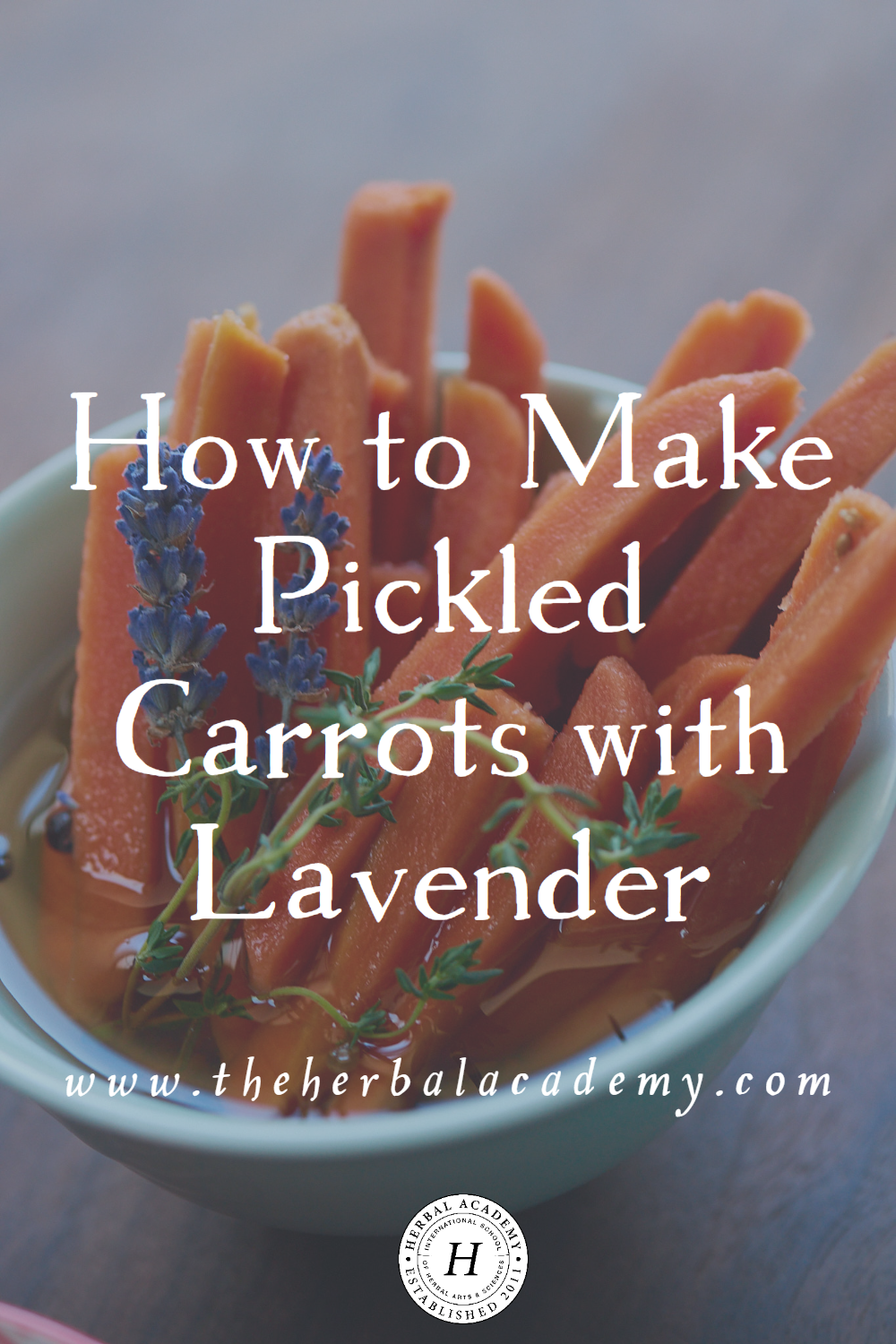

Holly Capelle is an expert home preserver and cook. She is beloved for her @BigFamilyLiving Instagram where she showcases a gallery’s worth of exquisite preserves, dehydrated powders, jams, oils, honey, flowers, and more that line her shelves. Now, anyone will be inspired either to start preserving or to find new ideas for using and cooking with what they have made.


